Optimization of Shared Parking Capacity Based on Urban Traffic Network Equilibrium
-
摘要:
为研究共享停车容量优化分配对用户出行选择的影响,建立了双层规划模型,上层模型根据停车管理平台总收益与步行费用最小确定共享停车用地的最优停车容量,下层建立共享停车、普通停车与乘坐公交出行的多用户均衡分配模型,用于描述共享停车用户出行方式的选择,通过共享停车选择概率实现上、下层模型之间的联系;设计了相继平均算法求解下层模型,并内嵌于差分进化算法,进而求解上层模型. 对常州市金坛区CBD区域的部分路网进行模拟测试. 研究表明:在不同共享停车容量分配下,停车管理平台收益随着容量的增加呈先递增后减少的趋势,而用户的出行费用随着共享停车容量的增加呈先减少后上升的趋势,说明合理地分配共享停车容量可以实现停车管理平台收益与共享停车需求之间的均衡.
Abstract:In order to study the impact of optimal allocation of shared parking capacity on user travel choices, a two-level planning model is established. The upper model determines the optimal parking capacity of shared parking land based on the total revenue of the parking management platform and the minimum walking cost. The lower layer establishes a multi-user balanced allocation model of shared parking, ordinary parking and public transportation to describe the choice of shared parking users’ travel modes. The connection between the upper and lower models is realized through the shared parking selection probability. The successive average algorithm is designed to solve the lower model, and it is embedded in the differential evolution algorithm to solve the upper model. A simulation test is conducted on part of the road network in the CBD area of Jintan District, Changzhou City. The result show that under different shared parking capacity allocations, the revenue of the parking management platform increases with the increase of capacity and then decrease, while the user’s travel expenses decrease with the increase of capacity and then rising, which shows that reasonable allocation of shared parking capacity can achieve a balance between the revenue of the parking management platform and the demand for shared parking.
-
城市停车难的问题一直以来都是城市管理者关心的焦点,随着互联网技术的发展,共享停车理念的提出,并结合APP共享停车预约技术不断向社会推广,使得原来空闲的车位得到有效地利用,缓解了停车难的问题.
当前,共享停车的研究主要有共享停车需求预测和共享停车泊位分配两大类,在第一类研究中,李亚辉[1]确立城市综合体需求预测的影响因素,基于停车生成率模型建立多影响因素综合作用下的综合体需求预测模型;王庆刚[2]充分考虑区位、公交出行方式、周转率的影响改进现有的共享停车需求预测模型;徐志豪等[3]建立三种用地的行为选择模型,并构建泊位共享下的需求预测模型. 在第二类研究中,Alkheder等[4]基于用户出行选择的行为调查分析,提出一个智能停车泊位预订分配系统的技术框架;Jiang等[5]对共享停车位分配问题中的停车不准时性进行建模和优化,给出了不同时段内消费者和业主的停车概率函数,并将随机规划模型转化为期望模型;Shao等[6]提出一个简单的共享停车平台模型,研究私人停车场和可出租停车场的共享停车问题;段满珍等[7]提出个性化的共享停车诱导服务策略,建立居住区共享停车泊位分配模型;孙会君等[8]以运营商利润最大为目标,提出闲置车位租用与停车请求分配的整数规划模型;张水潮等[9]考虑预约时刻、延长需求,以平台收益和步行距离为优化目标,建立共享泊位分配模型;Xiao等 [10]提出一种共享停车管理的双拍卖机制,充分考虑停车时间分配问题,使停车泊位得到有效的利用;Lei等[11]建立一个多时段非合作的双层规划模型,分析上层模型改变停车场的定价方案对下层停车需求的停车选择的影响作用.
虽然上述文献运用不同方法对共享停车进行研究,但从宏观的角度考虑共享泊位容量优化分配的研究较少,忽略了共享停车容量分配对用户出行选择的影响. 本文通过分析不同用户的出行行为,运用离散选择模型对用户出行方式选择、路径选择进行建模,确定共享停车用户的出行选择概率,在此基础上,建立双层规划模型研究不同共享停车用地的泊位容量分配,以引导共享停车流量合理分配实现闲置停车泊位的有效利用.
1. 多用户出行行为建模
考虑一个交通网络
G(N,A) ,其中:N为节点集合;A为所有路段集合,路段a∈A :Rrs 为所有OD(origin-destination)对rs间的集合,r 为起点,s 为终点;l 为所有路径集合;有共享停车s、普通停车o、公交出行b三类出行方式;qrs 为rs间总的出行需求;i 为共享停车场;io 为普通停车场. 假设共享停车用户向共享泊位管理平台申请泊位,根据平台反馈的分配信息到达指定共享停车场后步行至目的地,普通停车的用户到达普通停车场后搜索空闲泊位,如果该停车场没有空闲泊位则转到下一个停车场,直至找到空闲泊位,然后步行至目的地. 乘坐公交的用户从出发地步行至公交站台,然后乘坐公交到达目的地附近公交站台,再步行至目的地.图1表示具有三类出行用户的交通网络,有两个起始点及两个出行目的地. 共享停车用户从起始点出发直接到达共享停车场,然后步行至目的地;普通停车用户从起始点出发,寻找具有空闲停车泊位的普通停车场,然后步行至目的地;公交出行用户从起始点出发,步行至公交站台乘坐公交,下车后步行至目的地.
一般地,每个交通出行方式的出行成本都不一致,用户往往选择出行成本较少的方式出行,不同交通出行方式之间相互影响.
1.1 一般化成本费用
1.1.1 共享停车用户的出行阻抗函数
选择共享停车用户的出行成本
zs 包括路段出行成本、步行成本、早到惩罚成本、延迟离开惩罚成本、预约成本,如式(1)所示.zs=β1ts(xa) + β2ti,s+θ1β3(tg,i−th,i)+θ2β4(tm,i−tn,i)+ω(tn,i−tg,i), (1) 式中:
xa 为交通网络折算的路段a流量(包括小汽车和公交车);ts(xa) 为共享停车在路段a的旅行时间;ti,s 为共享停车场i到目的地的步行时间;tg,i 为预约的到达共享停车场i的时间;th,i 为实际到达共享停车场i的时间;θ1 为0-1变量,若tg,i<th,i ,θ1 取1,否则取0;tm,i 为实际离开共享停车场i的时间;tn,i 为预约的离开共享停车场i时间;θ2 为0-1变量,若tm,i>tn,i ,θ2 取1,否则取0;ω 为单位时间预约费用;β1 为共享停车用户在路段a的旅行时间成本系数;β2 为共享停车场i到目的地s的步行时间成本系数;β3 为早到惩罚成本系数;β4 为延迟离开惩罚成本系数.1.1.2 普通停车用户的出行阻抗函数
选择普通停车的用户出行成本
zo 包括路段出行成本、搜索泊位巡航成本、步行成本、停车成本,如式(2)所示.zo=β5to(xa)+γβ6tj,io(xa) + β7tio,s+φto, (2) 式中:
to(xa) 为普通停车用户在路段a 的旅行时间;tj,io(xa) 为搜索空闲普通停车场io 的巡航时间,采用美国公路局BPR (Bureau of Public Road)函数进行计算;γ 为0-1变量,若用户到达目的地没有空闲车位,而选择前往其他停车用地搜索空闲泊位则取1,否则取0;tio,s 为普通停车场io 到目的地s的步行时间;φ 为单位时间普通停车费用;to 为普通用户停车时长;β5 为普通停车用户在路段a的旅行时间成本系数;β6 为搜索空闲普通停车场的巡航时间成本系数;β7 为普通停车场io 到目的地s的步行时间成本系数.1.1.3 乘坐公交用户的出行阻抗函数
乘坐公交用户出行成本
zb 包括乘车时间成本、等待公交时间成本、两段步行时间成本、乘坐公交的票价,如式(3)所示.zb=β8tb(xa) + β9td+β10(tr,b+te,s)+ψ, (3) 式中:
tb(xa) 为出行者乘坐公交车的路段a旅行时间;td 为用户等待公交时间;tr,b 为用户从起点r到达始发公交站台的步行时间;te,s 为用户从终点公交站台到目的地s的步行时间;ψ 为公交票价;β8 为出行者乘坐公交车的路段旅行时间成本系数;β9 为用户等待公交时间成本系数;β10 为两段步行时间成本系数.由于出行者对选择出行方式的理解往往出现偏差,会产生感知误差费用,所以出行者的广义出行成本
zrs,V 由出行成本与随机误差费用组成,如式(4)所示. zrs,V=crs,V+χV, (4) 式中:
crs,V 为用户对交通出行方式V的理解出行成本,V∈{s,o,b} ;χV 为由于出行方式V的信息不准确或者其他因素所引起的感知误差.当理解误差费用参数
δ 服从Gumble分布时,出行方式V的理解成本满足logit模型,如式(5)所示.crs,V=−1δln∑lexp(−δcrs,l,V), (5) 式中:
crs,l,V 为OD对rs 间选择出行方式V的用户在路径l上的出行成本费用.根据logit模型,OD对rs间出行者选择出行方式V的概率为
PV=exp(−εzrs,V)exp∑V(−εzrs,V), (6) 式中:
ε 为出行者对不同交通方式选择的随机参数.OD对
rs 间选择出行方式V的用户选择路径l的概率为Pl,V=exp(−δcrs,l,V)∑lexp(−δcrs,l,V). (7) 2. 考虑共享泊位容量分配的双层规划模型
为分析共享停车容量分配对用户出行方式选择和交通网络的影响,建立双层规划模型. 上层模型的容量决策分配,影响下层模型的用户出行选择,上层模型从城市停车管理者的角度出发,对共享停车泊位容量进行分配;下层模型从用户的角度出发,建立随机多用户均衡模型,两个模型之间通过决策变量建立联系,加上模型的约束条件,通过反复迭代优化,最终达到均衡.
2.1 上层模型
根据上述的分析,由式(6)得到的共享停车的概率为
Ps ,总需求qrs 已知,得到共享停车需求量为Psqrs ,从停车管理者的角度出发,为了使停车管理平台收益z1 最大,城市停车管理者应考虑购买泊位的成本及每个泊位获得的利润,且分配的共享泊位量应接近共享停车需求,避免共享泊位的浪费,建立式(8)所示模型.maxz1=∑iRi(u−v)−ϕ(∑iRi−Psqrs), (8) 式中:
Ri 为共享停车场i分配的停车容量;u为一个车位获得的利润;v为购买一个车位的成本;ϕ 为共享泊位量容量分配过剩的惩罚系数.考虑到出行者往往选择离目的地距离最短的共享泊位用地停车,因此,所有分配的共享泊位容量应考虑整体的步行费用
z2 最小,如式(9)所示.minz2=∑iRiLisvp, (9) 式中:
Lis 为共享停车场i到目的地s的距离;vp 为步行速度,取值为2 m/s.上层模型为多目标规划,采用权重加权方式将多目标函数转化为单目标函数,单目标函数
z3 如式(10)所示;共享容量分配约束如式(11)所示,在满足共享停车需求的同时也应满足自身实际的停车需求;共享停车需求量为非负约束,如式(12)所示.maxz3=∂[∑iRi(u−v)−ϕ(∑iRi−Psqrs)]−(1−∂)∑iRiLisvp, (10) Psqrs⩽ (11) {P_{{\text{s}}}}{q_{rs}} \geqslant 0, (12) 式(10) ~ (11)中:
\partial 为权重系数;{\lambda _{i,\max }} 为共享停车场i的最大停车周转率,由历史数据调查得出;{C_i} 为共享停车场i的停车总容量.2.2 下层模型
上层模型的共享泊位容量分配决策影响下层模型的用户出行选择,针对用户出行选择行为建立多用户随机均衡分配模型,如式(13) ~ (19)所示.
\begin{split} &\min\; {{\textit{z}}_4} = \sum\limits_a {\int_0^{{x_a}} {{t_a}\left( x \right)} } {\rm{d}}x \;+ \\&\quad \sum\limits_r {\sum\limits_s {\sum\limits_l {\left( {{{\textit{z}}_{\text{s}}} + \frac{1}{\delta }\ln \frac{{{f_{rs,l,{\text{s}}}}}}{{{q_{rs,{\text{s}}}}}}} \right)} } } \;+ \\\\&\quad \sum\limits_r {\sum\limits_s {\sum\limits_l {\left( {{{\textit{z}}_{\text{o}}} + \frac{1}{\delta }\ln \frac{{{f_{rs,l,{\text{o}}}}}}{{{q_{rs,{\text{o}}}}}}} \right)} } } \;+ \\\\&\quad \sum\limits_r {\sum\limits_s {\sum\limits_l {\left( {{{\textit{z}}_{\text{b}}} + \frac{1}{\delta }\ln \frac{{{f_{rs,l,{\text{b}}}}}}{{{q_{rs,{\text{b}}}}}}} \right)} } } , \end{split} (13) {\text{ }}{q_{rs}} = \sum\limits_V {{q_{rs,V}}} , (14) {f_{rs,l,V}} = {q_{rs}}{P_{l,V}}, (15) {x_a} = \sum\limits_r {\sum\limits_s {\sum\limits_{l} {\sum\limits_V {{f_{rs,l,V}}} } } } {\delta _{al}}, (16) {q_{rs}} \geqslant 0, (17) {q_{rs,V}} \geqslant 0, (18) {f_{rs,l,V}} \geqslant 0, (19) 式(13) ~ (19)中:
{t}_{a}\left({x}_{a}\right) 为路段a在流量为xa时的出行费用函数;q_{rs,V}^{} 为一个OD对rs 间选择出行方式V的需求量;f_{rs,l,V}^{} 为一个OD对rs 间选择出行方式V在路径l上的流量;{\delta _{al}} 为0-1变量,当路段a在路径l上时,取1,否则取0.式(14)为需求量守恒约束;式(15)为路径流量与需求量守恒约束;式(16)为路段流量与路径流量守恒约束;式(17) ~ (19)为需求量和路径流量非负约束.
3. 求解算法设计
针对上述的双层规划模型,下层是多用户均衡分配模型,采用相继平均算法进行求解,上层模型则由差分进化算法求解,根据差分进化算法,设计嵌套式算法,具体步骤如下:
步骤1 初始化,以共享停车泊位供应量
{R_i} 为优化的个体变量进行实数编码,设定差分进化算法的种群规模W、个体维度为Y、矢量缩放因子F,交叉概率因子C、最大迭代次数K,则第k代第w个个体(k = 1,2, \cdots ,K,w = 1,2, \cdots ,W )记为\begin{split} &{X_w}\left( k \right) = \left\{ {\left. {{x_{w,1}}(k),{x_{w,2}}(k), \cdots ,{x_{w,y}}(k), \cdots ,{x_{w,Y}}(k)} \right\}} \right., \end{split} (20) 式中:
{x_{w,y}}(k) 为第k 代第w 个个体第y 个分量;y = 1,2, \cdots ,Y .初始种群记为
\begin{split} & {x_{w,y}}\left( 0 \right) = \min \left\{ {{x_{w,y}}(0)} \right\} + \\&\quad r_1\left( {\max \left\{ {{x_{w,y}}(0)} \right\} - \min \left\{ {{x_{w,y}}(0)} \right\}} \right), \end{split} (21) 式中:
r_1 为分布在\left[ {0,1} \right] 的随机数.步骤2 计算每个个体的适应度,取
H\left( {{X_w}\left( k \right)} \right) = O\left( {{X_w}\left( k \right)} \right) ,H\left( {{X_w}\left( k \right)} \right) 为{X_w}\left( k \right) 个体的适应度,O\left( {{X_w}\left( k \right)} \right) 为{X_w}\left( k \right) 个体的目标函数值.步骤3 将
{R_i} 代入下层模型,利用相继平均法求解得到对应{x_a} ,代入到式(1) ~ (3)得到各类出行方式的阻抗函数,再由式(4) ~ (7)求解得到共享停车选择概率{P_{\text{s}}} ,将{P_{\text{s}}} 代入到上层模型,计算每个个体的适应度,如果k = K ,满足约束条件的适应度排名最大的个体即为最优解,输出结果,求解结束,否则转步骤4.步骤4 从种群
W 中随机选取3个互不相同的个体,合并成一个变异个体{V_w}\left( {k + 1} \right) = \{ {v_{w,1}}(k + 1), {v_{w,2}}(k + 1), \cdots , {v_{w,y}}(k + 1), \cdots ,{v_{w,Y}}(k + 1) \} ,按式(22)进行变异.\begin{split} &{v_{w,y}}(k + 1) = {x_{{r_2,y}}}(k) + F \left( {{x_{{r_{3},y}}}(k) - {x_{{r_{4},y}}}(k)} \right), \\&\quad {r_2} \ne {r_3} \ne {r_4}, \end{split} (22) 式中:
{v_{w,y}}(k + 1) 为第k + 1代第w个个体第y个变异分量;r2、r3、r4为位于\left[ {1,W} \right] 的3个随机整数.步骤5 将变异个体和目标个体的元素交叉重组(式(23)所示),得到新的试验个体
{U_w}\left( {k + 1} \right) = \{ {u_{w,1}}(k + 1), {u_{w,2}}(k + 1), \cdots ,{u_{w,y}}(k + 1), \cdots ,{u_{w,Y}}(k + 1) \} .{u}_{w,y}(k + 1)=\left\{ \begin{array}{l}{v}_{w,y}(k + 1),\;\;\text{}r_1 \leqslant C \;或 \;\text{}y=r_5,\\ {x}_{w,y}(k),\;\;\text{}其他,\end{array}\right. (23) 式中:
{u_{w,y}}(k + 1) 为第k + 1代第w个个体第y个变异重组分量;r5为位于区间 [1,Y] 的随机整数.步骤6 选择过程,计算试验个体
{U_w}(k + 1) 适应度,与目标个体进行优劣比较,较优的个体成为新的子代,否则被淘汰,选择操作如式(24)所示.\begin{split} &{X}_{w}\left(k + 1\right)=\\ &\quad\left\{ \begin{array}{l}{U}_{w}(k + 1),\;\;\text{ }H\left({U}_{w}(k + 1)\right)\leqslant H\left({X}_{w}(k)\right),\\ {X}_{w}(k),\;\;\text{ }其他.\end{array}\right. \end{split} (24) 令
k = k + 1 ,更新子代个体,转步骤3.4. 算例分析
4.1 研究范围及相关数据
本文对常州市金坛区新城吾悦广场区域的部分路网及相关数据进行分析. 如图2所示,以金坛区金沙医院D1和新城吾悦广场D2为目的地,其他类型建筑用地有各自的停车场,如景潭花园一期二期P1、景潭花园三期P2、徐塘新村P3、维也纳酒店P4、左邻右里P5,各个小区和酒店的停车场作为毗邻的共享停车用地为金坛金沙医院和新城吾悦广场分担停车需求. 为便于计算,将研究区域附近部分路网绘制成简单的路网拓扑图如图3所示,图中数字为网络节点号,O1 ~ O4为网络起始点. 目前常州市金坛区还没有实施共享停车的方案,根据调查发现在上午9:00—11:00时段的停车需求量达到高峰,适合采用错峰停车的方式开放共享泊位. 故以调查背景为9:00—11:00时段的OD需求量,包括小汽车和公交出行时间及实际到达目的地的时间作为实验数据. 根据数据统计,共享停车的平均预约费用取值为
\omega = 5 元/h,普通停车平均收费取值为\varphi = 3 元/h,公交收费取值为\psi = 1 元,参数取值为{\beta _{\text{1}}}{\text{ = 0}}{\text{.36}} ,{\beta _{\text{2}}}{\text{ = 0}}{\text{.12}} ,{\beta _{\text{3}}}{\text{ = 0}}{\text{.32}} ,{\beta _{\text{4}}}{\text{ = 0}}{\text{.33}} ,{\beta _{\text{5}}}{\text{ = 0}}{\text{.40}} ,{\beta _{\text{6}}}{\text{ = 0}}{\text{.12}} ,{\beta _{\text{7}}}{\text{ = 0}}{\text{.34}} ,{\beta _{\text{8}}}{\text{ = 0}}{\text{.56}} ,{\beta _{\text{9}}}{\text{ = 0}}{\text{.11}} ,{\beta _{{\text{10}}}}{\text{ = 0}}{\text{.35}} ,{\theta _{\text{1}}}{\text{ = 0}}{\text{.23}} ,{\theta _{\text{2}}}{\text{ = 0}}{\text{.18}} ,\delta {\text{ = 0}}{\text{.05}} ,\varepsilon {\text{ = 0}}{\text{.02}} ,\phi {\text{ = 0}}{\text{.5}} ,\partial {\text{ = 0}}{\text{.7}} ,路段旅行时间{t_V} 采用BPR函数形式表示为{t_V}\left( {{x_a}} \right) = {t_{a,0}}[ {1 + 0.15{{\left( {{x_a}/{C_a}} \right)}^4}} ], (25) 式中:
{t_{a,0}} 为自由流的行驶时间;{C_a} 为路段的通行能力.表1表示共享泊位用地的停车容量,表2表示停车场到目的地的步行距离.
表 1 共享泊位用地的停车容量Table 1. Parking capacity of shared berth land个 停车场 P1 P2 P3 P4 P5 容量 460 270 392 166 620 表 2 停车场到目的地的步行距离Table 2. Distance between parking lot and destinationm 目的地 P1 P2 P3 P4 P5 D1 120 452 130 650 540 D2 390 125 350 110 650 4.2 实验结果分析
1) 实验参数设置
本实验使用MATLAB软件进行求解,嵌套式差分进化算法参数设置为:
W = 30 ,F = 0.11 ,C = 0.9 ,K = 300 ,仿真时间为7 ks.2) 结果分析
图4描述在出行费用最小化的情况下,各个停车场共享泊位占用率变化的情况. 从图中可以看出:到6 000 s后停车场P2、P3、P4都达到饱和,到达7 000 s后停车场P1的泊位利用也基本达到饱和,只有P5泊位利用率低下,是因为P5离目的地D1和D2都比较远.
图5描述在出行费用最大化的情况下,各个停车场共享泊位占用率变化的情况. 从图中可以看出:在停车收益最大化的情况下,P2、P3、P4是最先达到饱和,其次是P1,P5的共享泊位的占用率先增大后趋于平稳,是因为前期为D2分担一部分的需求量,后面趋于平稳是因为其他共享泊位用地分担了大部分的共享停车需求,且出行者倾向于选择目的地附近的共享泊位用地.
图6描述不同停车容量分配下各个停车场收益的变化情况. 从图中可以看出:停车场P2、P3、P4的收益和停车容量呈正相关,停车场P1分配到100个共享泊位容量后收益趋于平缓,是因为P1靠近目的地D1,而金坛金沙医院停车需求量相对较少,所以P1分配过多停车容量也会造成共享泊位的剩余,图中还展示了停车场P5的收益随着共享泊位容量的增加先增长后下降,是由于P5与D1、D2的距离都较远,选择P5的共享停车用户相对较少,所获得的利润减去容量过剩的惩罚费用和步行费用的值也会减小,说明距离目的地较近且停车容量越多的共享泊位用地往往会吸引大量的停车出行者,反之距离目的地较远且停车容量较小的共享泊位用地的停车出行者相对较少.
图7描述了在不同停车容量下,共享停车出行选择概率与共享停车泊位容量呈正相关,普通停车和公共交通出行选择概率呈负相关,说明共享泊位的容量的增加会刺激部分出行用户转变出行方式来选择共享停车方式出行.
图8描述了在不同停车容量下,停车管理平台的总收益和用户出行费用的变化情况. 从图中可以看出:随着停车容量的增加停车管理平台总收益也随之增长,到了800个泊位容量后总收益出现减少的情况,是因为选择共享停车的用户也缓慢增长,从而产生容量分配过剩的惩罚费用;随着共享停车容量的增加,用户出行费用先减小后增大,是因为选择共享停车用户通过预约的泊位直接到达指定的停车场,减少路段上搜索泊位的流量,路段行驶费用也随之减小,所以整体的用户出行费用较小,用户出行费用的增加是因为选择共享停车用户增加,使路段流量出行增加,从而导致用户路段行驶费用的增加,所以增加了用户出行费用;在800个停车容量下,停车总收益达到最优,且用户总延误最小,结合用户的共享停车选择概率得到共享停车需求出行量. 再根据图4和图5两个约束下的每块共享泊位用地占用率的变化,得到不同共享用地的停车需求高低,依据占用率的变化向每块共享泊位用地分配停车容量,具体分配方案如表3所示.
表 3 共享停车场剩余及分配的泊位容量Table 3. Remaining and allocated berth capacity of shared parking lot个 停车场 剩余泊位 分配泊位 P1 360 110 P2 213 180 P3 350 300 P4 133 130 P5 431 80 合计 1486 800 5. 结 论
1) 共享停车用户出行选择概率与共享停车容量呈正相关,普通停车出行用户和公交出行用户的出行选择概率与共享停车容量呈负相关,表明共享停车容量的分配影响用户出行方式选择.
2) 随着共享泊位停车容量不断增加用户的出行费用呈先下降后上升的趋势,停车管理平台收益呈先上升后下降的趋势,两者存在共同的拐点,说明合理的共享泊位容量分配不仅可以提高停车管理平台总收益,减少用户的出行成本,而且能够利用不同建筑的毗邻关系实施共享停车,有效缓解的商业区、医院停车资源紧张的问题,充分利用空闲泊位,提高整体停车资源的利用率.
-
表 1 共享泊位用地的停车容量
Table 1. Parking capacity of shared berth land
个 停车场 P1 P2 P3 P4 P5 容量 460 270 392 166 620 表 2 停车场到目的地的步行距离
Table 2. Distance between parking lot and destination
m 目的地 P1 P2 P3 P4 P5 D1 120 452 130 650 540 D2 390 125 350 110 650 表 3 共享停车场剩余及分配的泊位容量
Table 3. Remaining and allocated berth capacity of shared parking lot
个 停车场 剩余泊位 分配泊位 P1 360 110 P2 213 180 P3 350 300 P4 133 130 P5 431 80 合计 1486 800 -
[1] 李亚辉. 基于泊位共享的城市综合体停车需求预测方法研究[D]. 哈尔滨: 哈尔滨工业大学, 2016. [2] 王庆刚. 允许泊位共享的城市综合体停车需求分析方法研究[D]. 济南: 山东大学, 2018. [3] 徐志豪,马健霄. 基于行为选择特性的泊位共享需求预测[J]. 物流科技,2019,42(7): 27-32. doi: 10.3969/j.issn.1002-3100.2019.07.008XU Zhihao, MA Jianxiao. Parking sharing demand forecasting based on behavior selection[J]. Logistics Sci-Tech, 2019, 42(7): 27-32. doi: 10.3969/j.issn.1002-3100.2019.07.008 [4] ALKHEDER S A, AL RAJAB M M, ALZOUBI K. Parking problems in Abu Dhabi, UAE toward an intelligent parking management system “ADIP:Abu Dhabi Intelligent Parking”[J]. Alexandria Engineering Journal, 2016, 55(3): 2679-2687. doi: 10.1016/j.aej.2016.06.012 [5] JIANG B W, FAN Z P. Optimal allocation of shared parking slots considering parking unpunctuality under a platform-based management approach[J]. Transportation Research Part E:Logistics and Transportation Review, 2020, 142: 102062.1-102062.16. [6] SHAO C Y, YANG H, ZHANG Y, et al. A simple reservation and allocation model of shared parking lots[J]. Transportation Research Part C:Emerging Technologies, 2016, 71: 303-312. doi: 10.1016/j.trc.2016.08.010 [7] 段满珍,杨兆升,张林,等. 个性化诱导下的居住区共享停车泊位分配模型[J]. 东北大学学报(自然科学版),2017,38(2): 174-179. doi: 10.3969/j.issn.1005-3026.2017.02.005DUAN Manzhen, YANG Zhaosheng, ZHANG Lin, et al. Parking spaces allocation model of residential areas sharing parking based on personalized guidance[J]. Journal of Northeastern University (Natural Science), 2017, 38(2): 174-179. doi: 10.3969/j.issn.1005-3026.2017.02.005 [8] 孙会君,傅丹华,吕莹,等. 基于共享停车的车位租用与分配模型[J]. 交通运输系统工程与信息,2020,20(3): 130-136.SUN Huijun, FU Danhua, LV Ying, et al. Parking spaces renting and allocation model for shared parking[J]. Journal of Transportation Systems Engineering and Information Technology, 2020, 20(3): 130-136. [9] 张水潮,蔡逸飞,黄锐,等. 基于预约需求的共享停车平台泊位分配方法[J]. 交通运输系统工程与信息,2020,20(3): 137-143,162.ZHANG Shuichao, CAI Yifei, HUANG Rui, et al. Shared parking space allocation method considering reservation demand[J]. Journal of Transportation Systems Engineering and Information Technology, 2020, 20(3): 137-143,162. [10] XIAO H H, XU M, GAO Z Y. Shared parking problem:a novel truthful double auction mechanism approach[J]. Transportation Research Part B:Methodological, 2018, 109: 40-69. doi: 10.1016/j.trb.2018.01.008 [11] LEI C, OUYANG Y F. Dynamic pricing and reservation for intelligent urban parking management[J]. Transportation Research Part C:Emerging Technologies, 2017, 77: 226-244. doi: 10.1016/j.trc.2017.01.016 期刊类型引用(5)
1. 江筱薇,周建坤,单晓峰,杜牧青. 多模式城市交通网络容量模型及实例研究. 贵州大学学报(自然科学版). 2024(03): 116-124 .  百度学术
百度学术2. 王迪,常玲,韩忠华. 基于区块链的城市智能交通网络均衡分配方法. 计算机仿真. 2024(08): 127-130+427 .  百度学术
百度学术3. 卢桐百,高良鹏,胡永仕,简文良,曾丽华. 基于演化博弈的预约停车策略分析. 福建理工大学学报. 2024(06): 605-612 .  百度学术
百度学术4. 周涂强,张佳琪,郑四发,孙川,李浩然. 低碳出行导向下城市居民共享交通方式选择行为研究. 安全与环境学报. 2023(06): 2060-2069 .  百度学术
百度学术5. 王鹏飞,王湘玉,于剑楠. 共享停车泊位管理与政策的研究进展与展望. 河北科技师范学院学报. 2023(02): 80-86 .  百度学术
百度学术其他类型引用(3)
-















 下载:
下载:












































































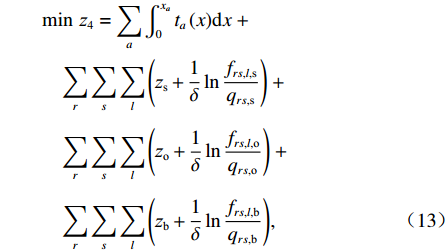














































































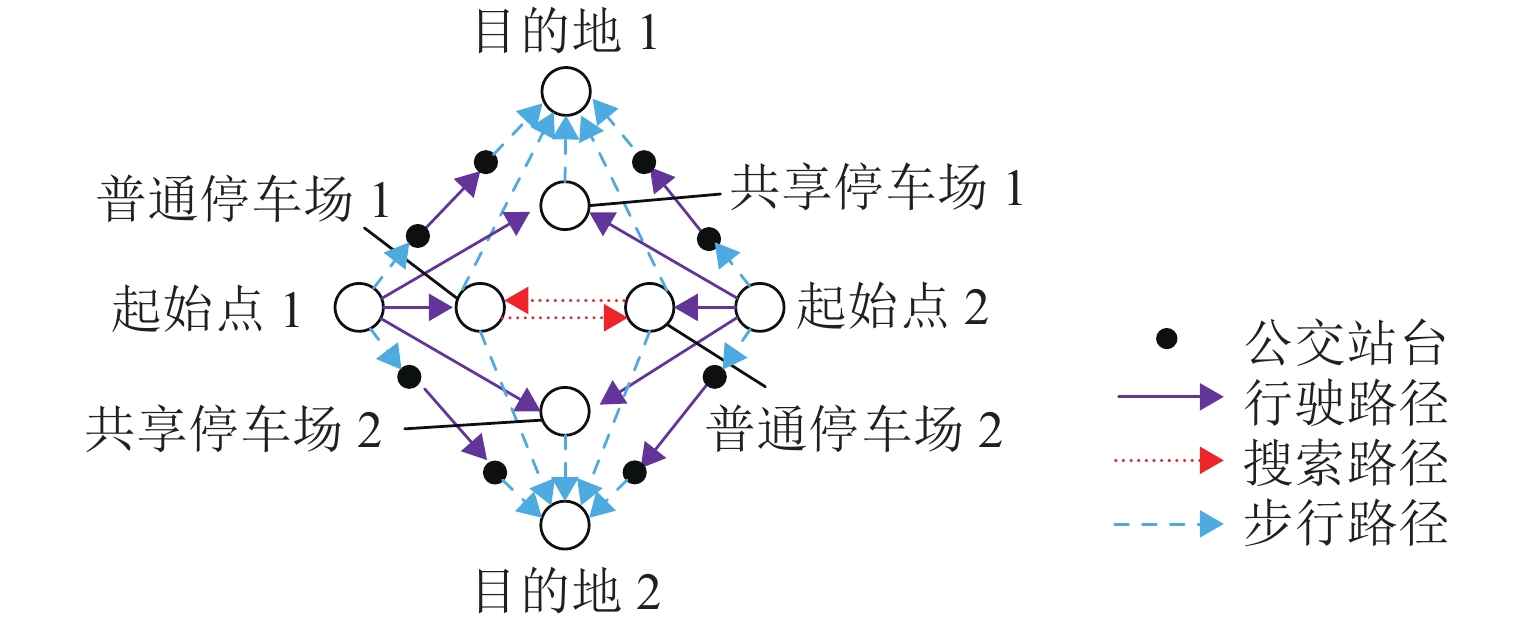
 下载:
下载:
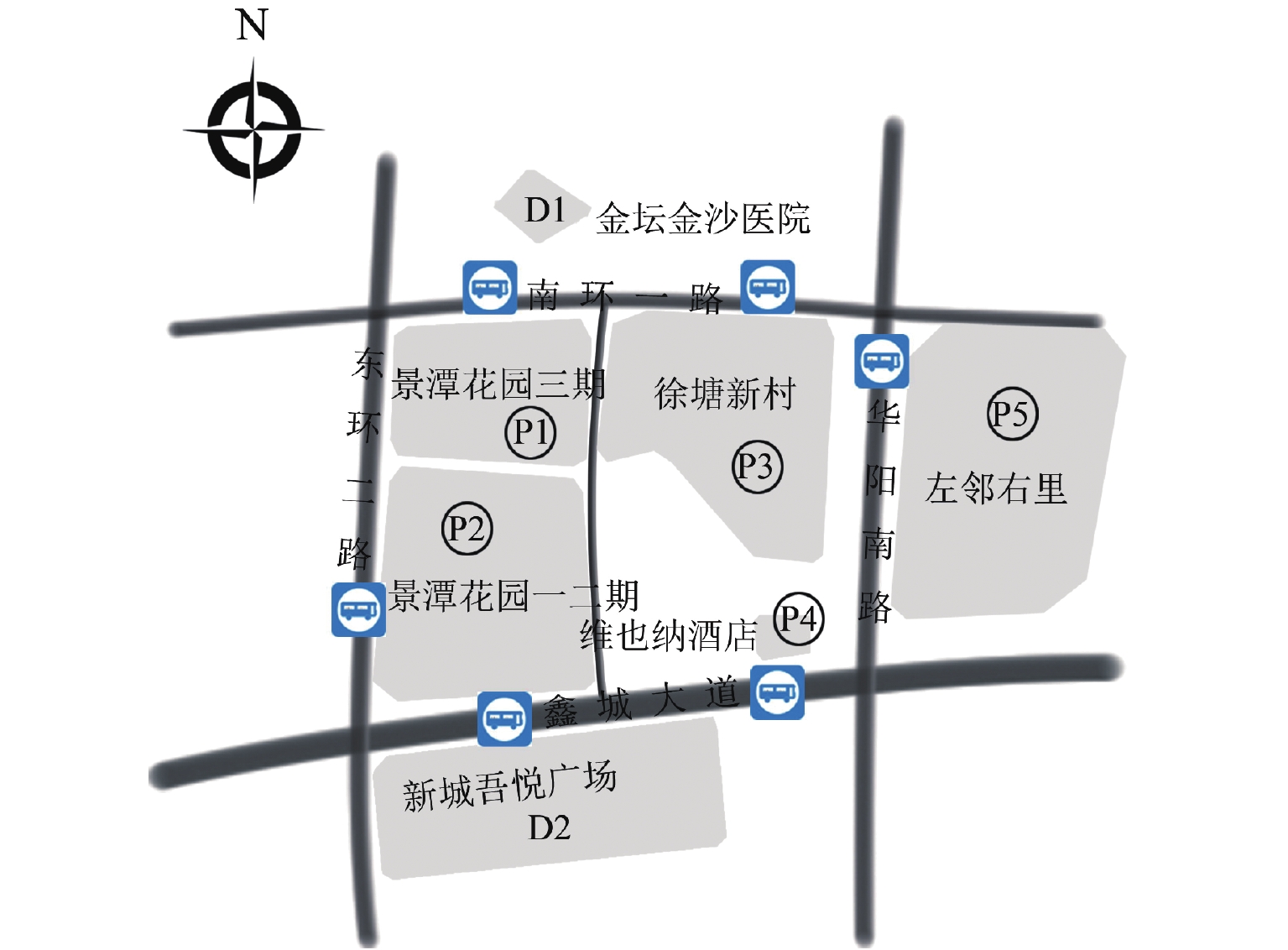
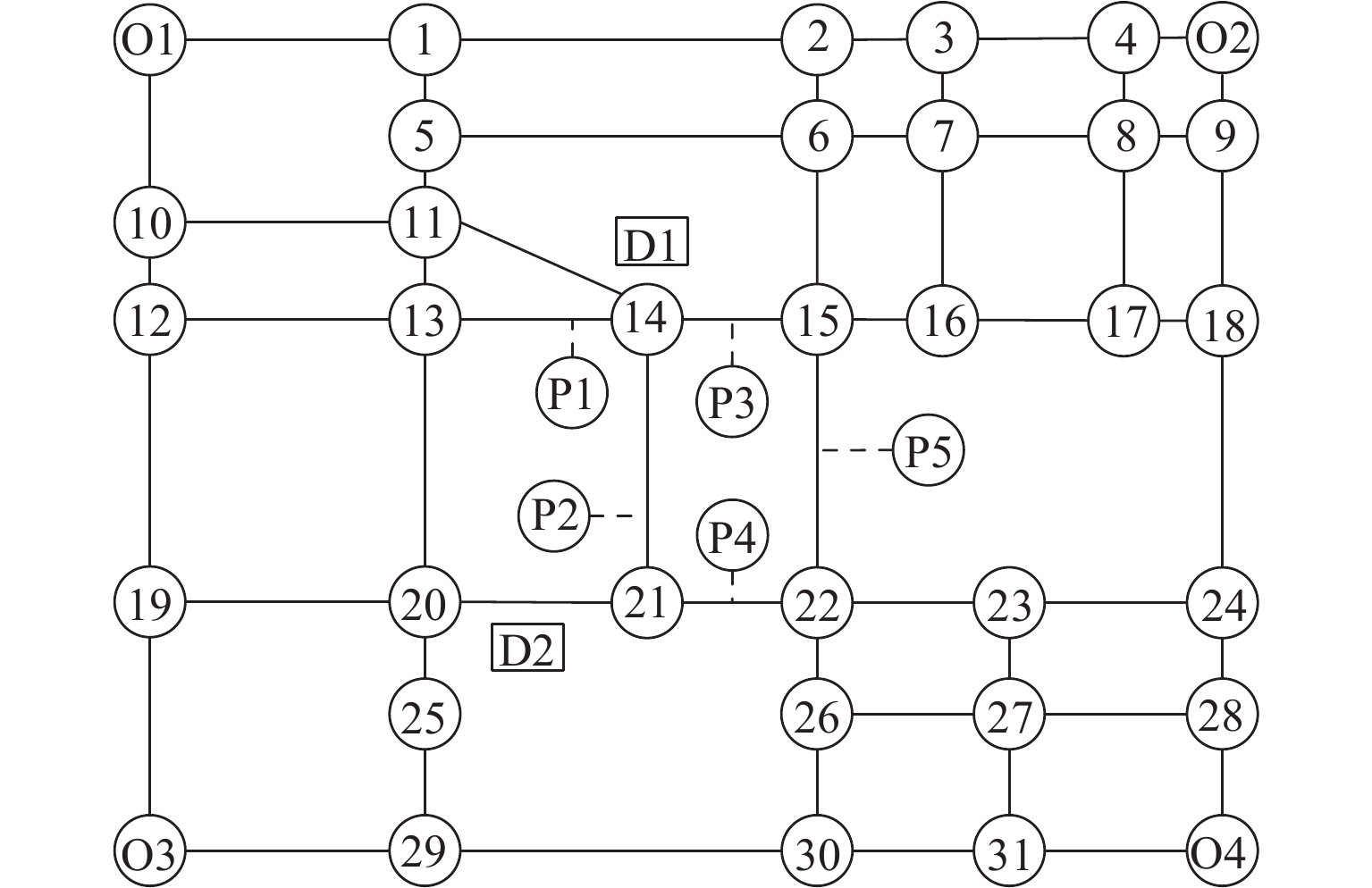
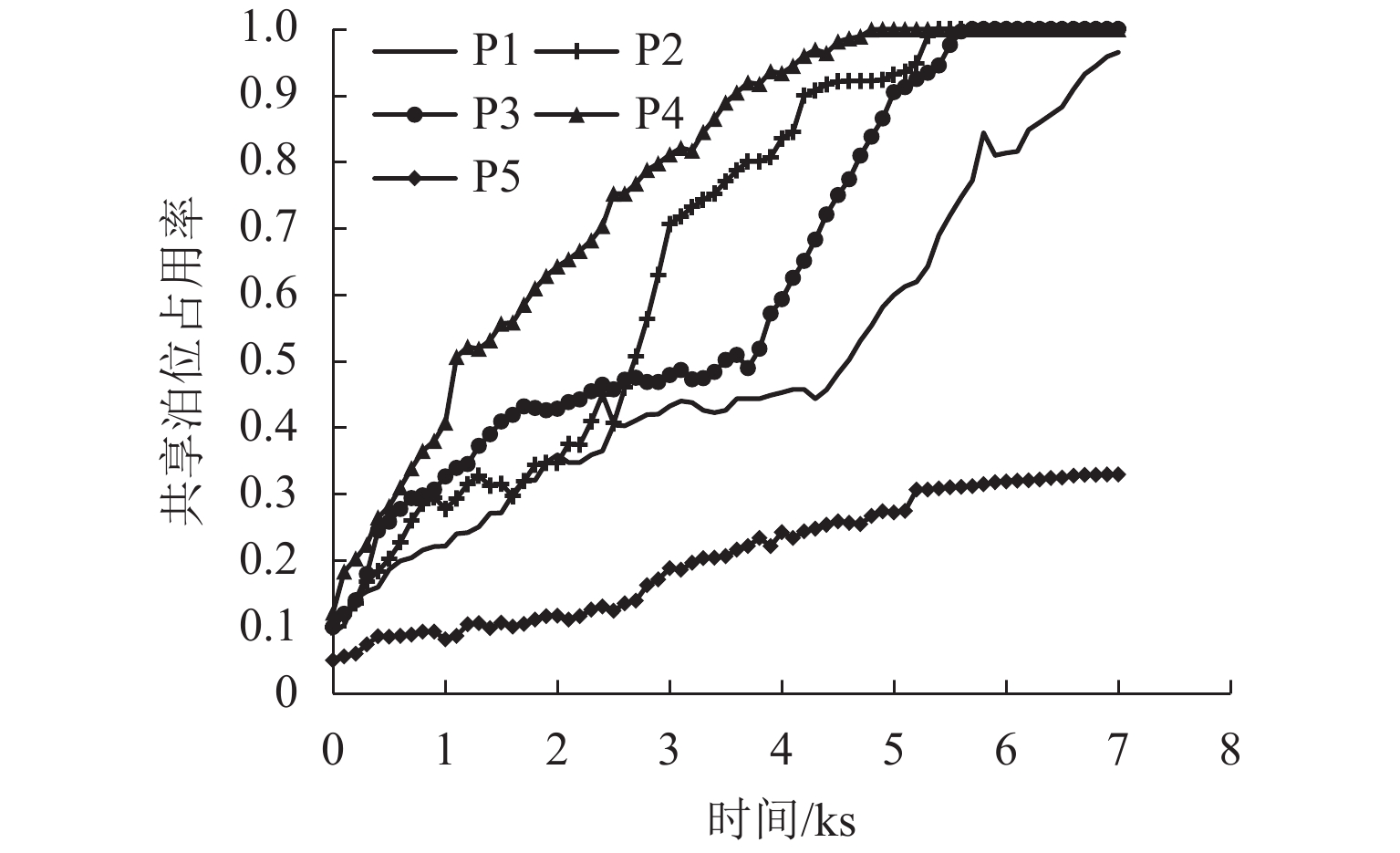
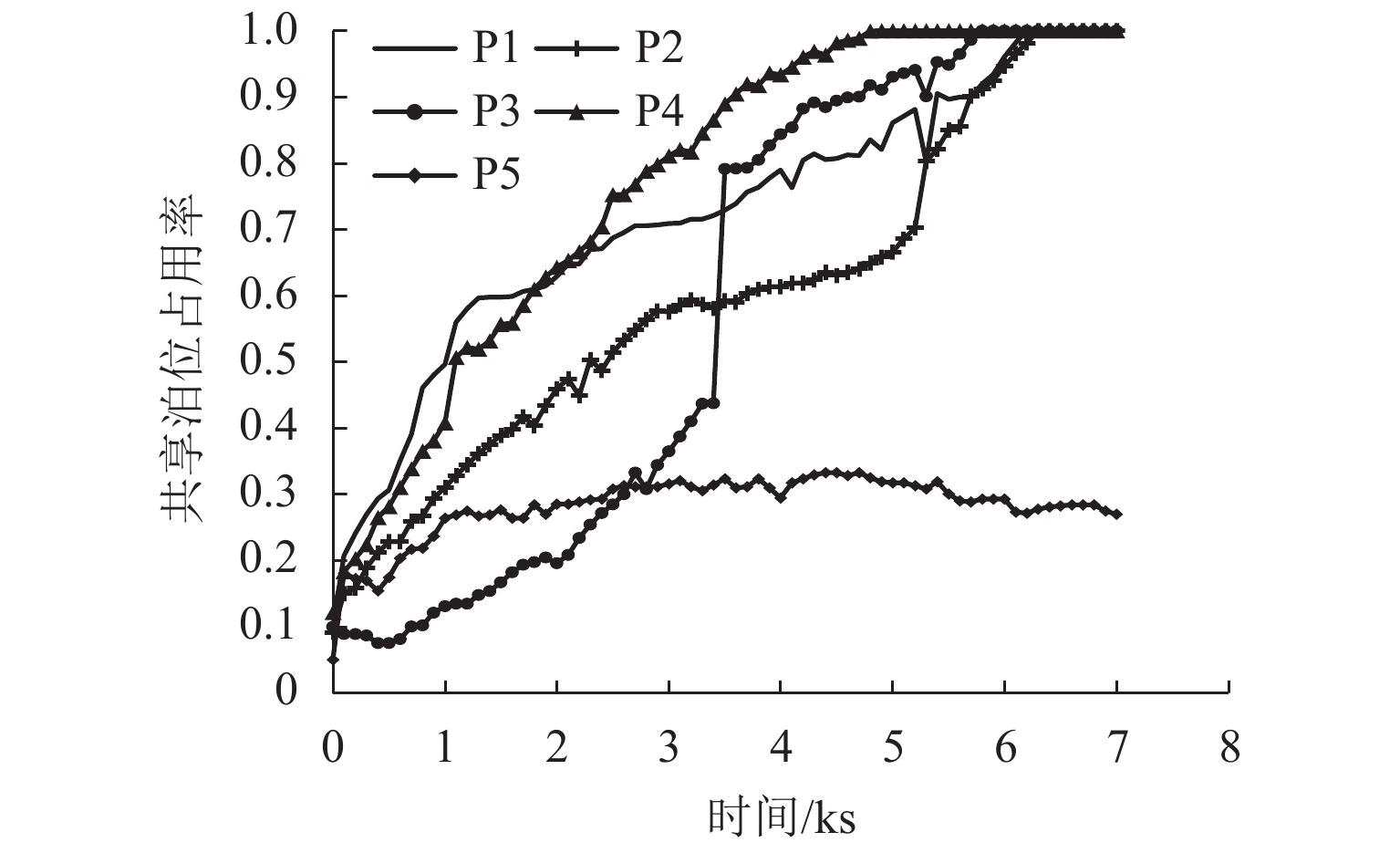
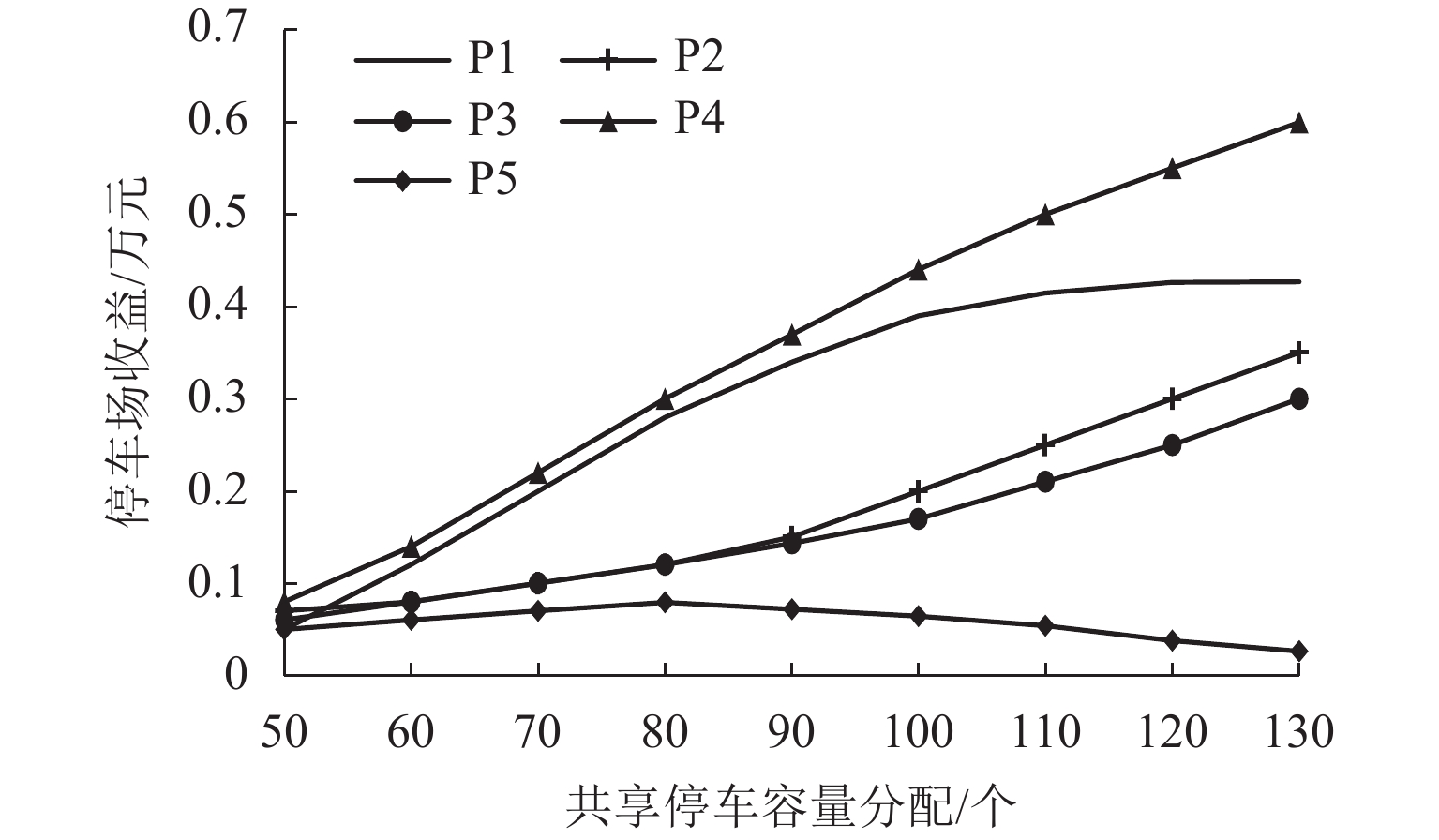
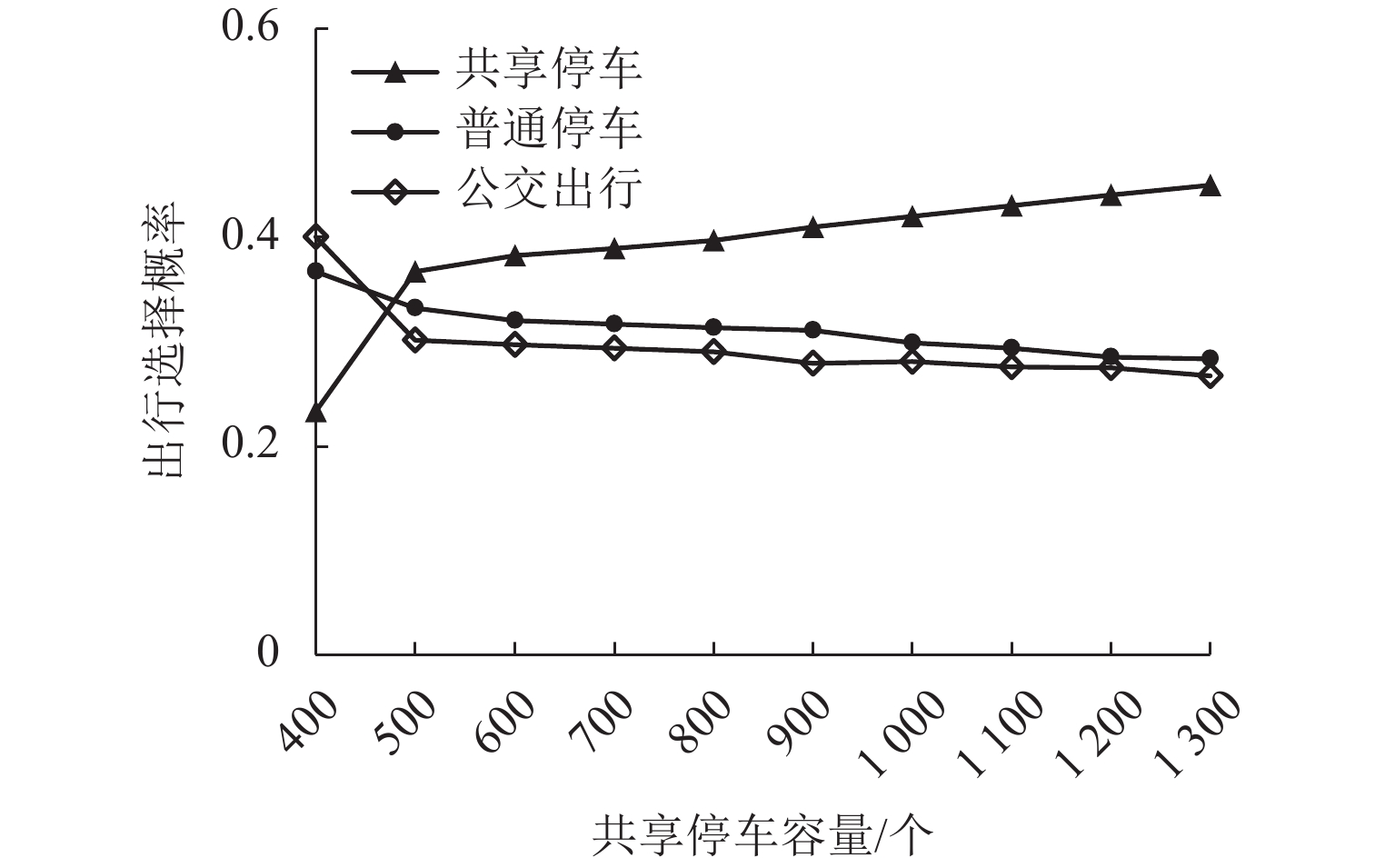
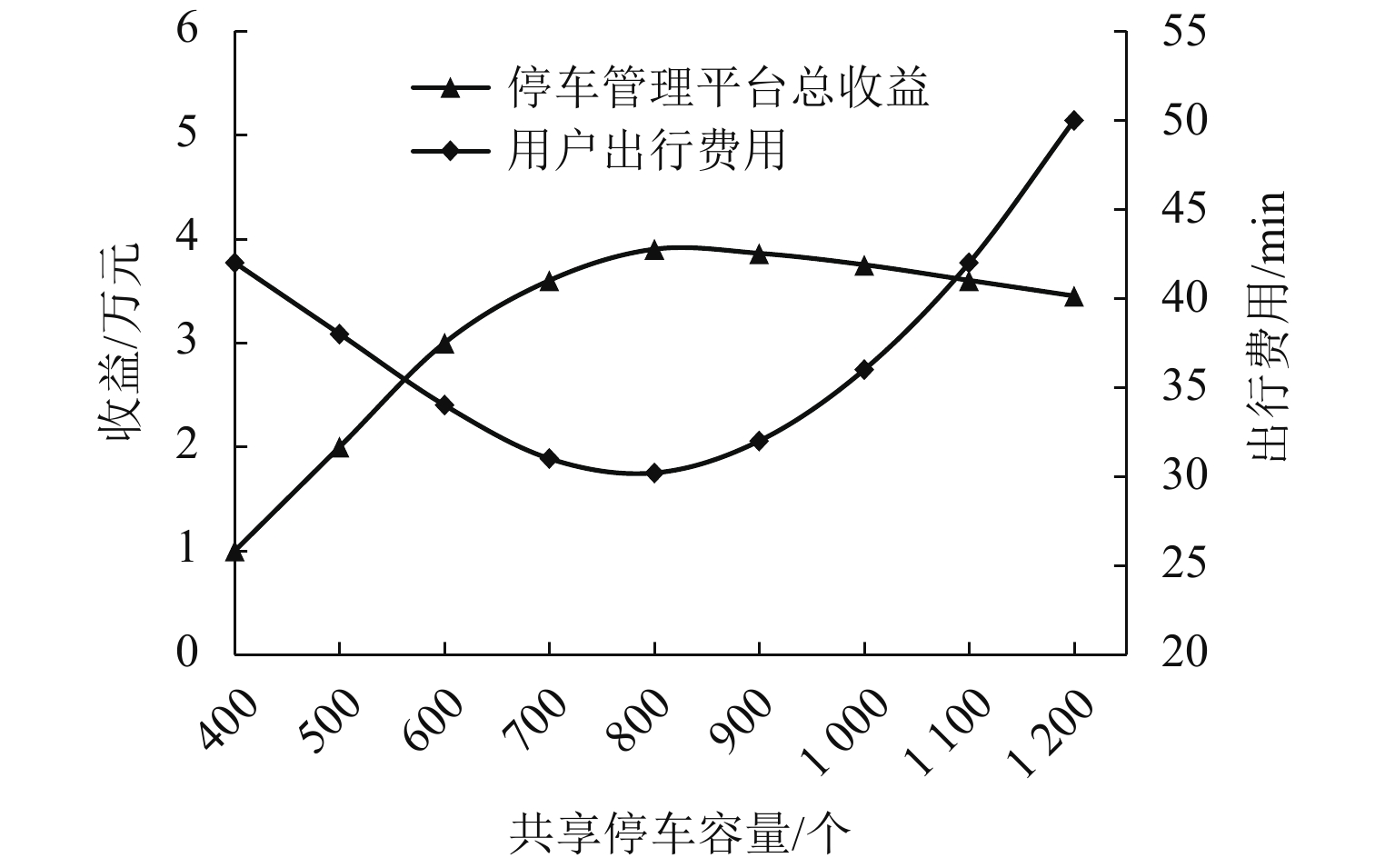
 百度学术
百度学术








